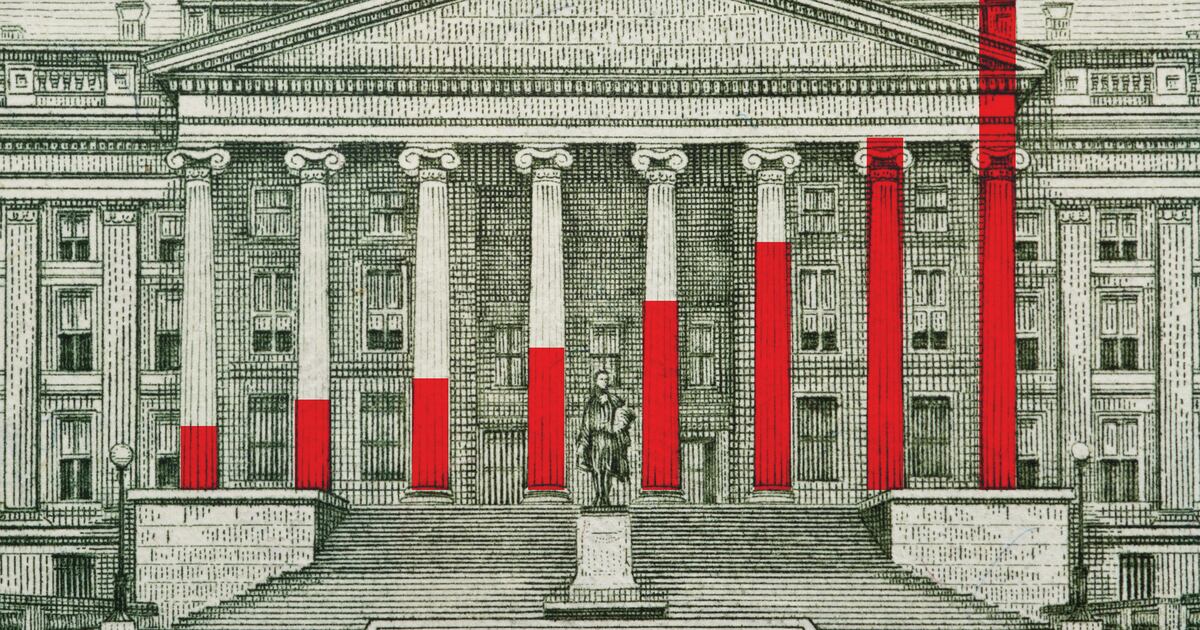Copyright Salt Lake City Deseret News

As Congress battles over a three-week extension to the federal budget, the United States is barreling toward a long-term fiscal crisis that lawmakers appear reluctant to address. The U.S. national debt surpassed $38 trillion on Oct. 23, just two months after hitting $37 trillion, with the country on track to soon spend more on interest payments than on any other budget item. Speaking after the Senate’s 14th failed vote to reopen the government on Monday, Utah Rep. Mike Kennedy said Washington, D.C., is not focused on resolving this deeper problem sending the country toward stagnation. “It’s not a lack of ideas, it’s just a lack of political will to move on these things, because nobody seems to care about what is now a $38 trillion debt,” Kennedy told the Deseret News. Kennedy, who has represented the 3rd Congressional District since January, campaigned last year on bringing solvency to Medicare and Medicaid which, along with Social Security, are responsible for over two-thirds of all federal spending. Kennedy’s willingness to tackle the politically perilous issue head-on may be tied to the fact that Utahns are more likely to list “government budget debt” as a key political priority than residents in any other part of the country. During a press conference at the Utah Capitol, Kennedy touted changes to Medicaid — imposing work requirements and restricting state provider taxes — and efforts to return to regular budgeting processes as steps taken toward decreasing U.S. deficit spending. But, according to top policy analysts, the changes needed to place the country on a path toward financial sustainability, instead of economic downturn, will require more significant bipartisan reforms that Congress no longer seems able to achieve. How does the national debt impact me? The national debt has nearly doubled over the past decade, rising $15 trillion just since 2020. The debt is now on track to increase by $1 trillion every few months, with the rate expected to pick up as interest payments grow. In 2024, the amount the U.S. spent to simply finance its debt eclipsed the defense budget for the first time. In 2025, total interest costs are expected to approach $1 trillion, eating up $14 trillion over the next decade. The negative impacts on Americans are certain. However, some are slow and less visible, while others could be potentially catastrophic, according to Douglas Elmendorf, the former director of the Congressional Budget Office. In an interview with the Deseret News, Elmendorf, who is a professor of public policy at Harvard University, said interest payments are quickly crowding out other priorities the government should be funding, like defense and welfare. While government borrowing can be useful in moderate amounts, Elmendorf said that irresponsible borrowing leads to higher interest rates that make it harder to take out loans to buy a home, start a business or pay employees. “That can go along for a while without creating a moment of crisis,” Elmendorf said. “But all the outcomes of excessive borrowing are bad in different ways.” The U.S. has a uniquely strong economy that gives it the ability to recover from its debt, Elmendorf said. A true crisis would occur if the world stops seeing the U.S. as a safe place to store their money via U.S. government bonds. In that situation, the government could act quickly to change policy to restore confidence in the country’s fiscal situation — or it could buy the bonds, flushing the economy with printed money that would spur high levels of inflation. What are solutions to the national debt? Lawmakers will sometimes frame annual budget fights as an effort to tackle the debt by making small spending cuts. But these are mostly a distraction, according to Dominik Lett, a budget policy analyst at the Cato Institute. “The shutdown is largely political theatre that won’t change debt trajectory,” Lett told the Deseret News. “The reality is, Social Security and Medicare ... are what will determine our budget trajectory over the coming years.” Funding for these programs is never voted on. The Congressional budgeting process contemplates less than a third of “discretionary” federal spending, while “mandatory” welfare programs are funded automatically. The cost of Social Security and Medicare have skyrocketed, Lett said, as the senior population has grown in relation to the workforce, lifespans have increased and Congress has expanded benefits, even as health care costs have grown. Turning the trajectory around starts with legislative leadership of both parties creating a credible, accountable budgeting plan that requires Congress to reach a certain debt-to-GDP ratio in its spending, according to Lett. Next, lawmakers must do the hard work of negotiating politically unpopular compromises, like incrementally raising the age of eligibility for retirement benefits, and ending price disparities where Medicare pays more for hospital visits than visits to physician offices. While an agreement that gets members of both parties on board will probably require some tax increases, the debt is fundamentally a problem of spending outside of our means — and will require more than cutting just the low-hanging fruit, Lett said. “Americans need to understand that you cannot address the current fiscal crisis without making reforms to Social Security and Medicare — everything else is window dressing," Lett said. “Until Americans understand that, and politicians agree on that, we won’t be able to stabilize the debt, and we won’t be able to seriously address this issue.” The longer Congress waits to act, the more U.S. taxpayer dollars will be wasted on interest payments, Lett said, and the harder it will be to make the necessary course correction to decrease expenditures without crushing the economy. Negative impact on income The Congressional Budget Office predicted that the national debt will negatively impact the average American’s income to the tune of $5,500 each year by 2054 if leaders in Washington, D.C., don’t stabilize the debt. If the debt grows more quickly than expected, then Americans could be losing up to $14,500 each year that the economy would have provided if not for the burden of high interest rates and decreased investment. There is hope; the U.S. has dug its way out of fiscal calamity before, according to Elmendorf, who previously worked as an economist for the Federal Reserve, the U.S. Treasury and the White House. In the 1980s and ’90s, Congress and the president were able to agree on reforms to Social Security, Medicare and the budgeting process — cutting spending and raising taxes — that resulted in a balanced budget, Elmendorf pointed out. Elmendorf acknowledged that most people don’t have time to analyze federal budgets. But the effects of Congress’ failure to work productively on this issue will have very real consequences on those closest to home. “People need to recognize that we’re making our children’s lives more difficult by piling up government debt and not bringing revenue and spending in line with each other,” Elmendorf said. “It is a burden that we will be leaving to our children unless we take action.”



